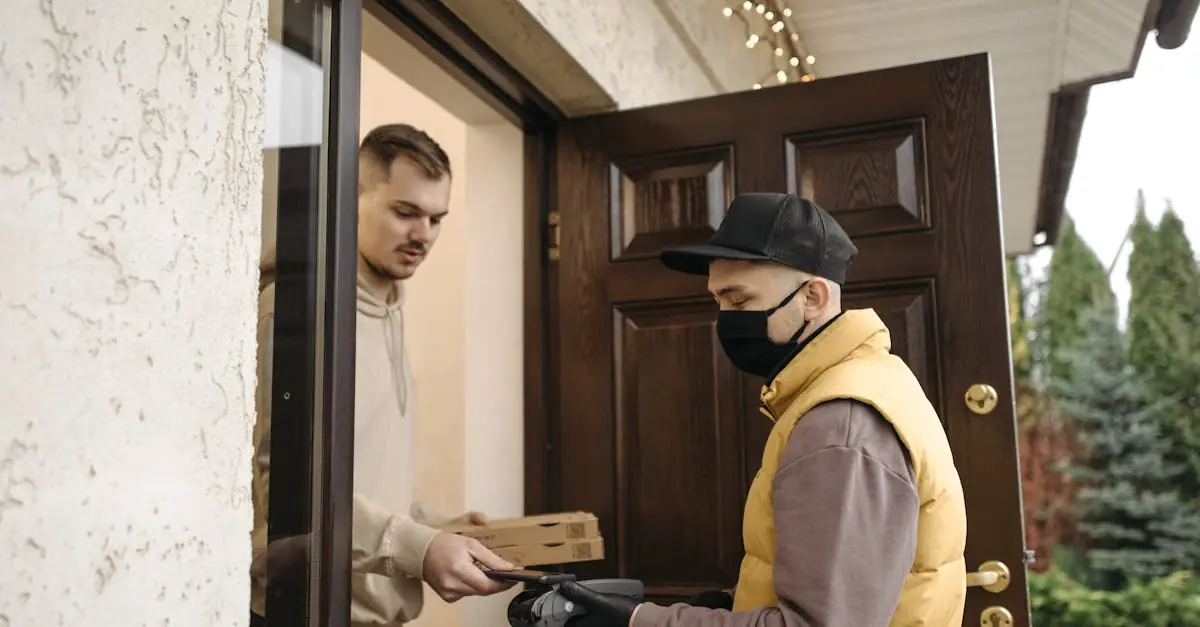Table of Contents
ToggleBuying a house is like dating—everyone wants to find the perfect match, but it often takes a little commitment upfront. Enter the down payment, the financial equivalent of showing up with flowers on the first date. It’s the initial investment that proves you’re serious about settling down with that dream home.
Understanding Down Payment on a House
A down payment serves as an essential financial commitment when buying a house. It represents a percentage of the property’s purchase price paid upfront, influencing loan terms and monthly payments.
What Is a Down Payment?
A down payment refers to the initial sum of money paid toward the purchase price of a home. Typically, it ranges from 3% to 20% of the total cost, depending on the loan type. For example, putting down 20% on a $300,000 house amounts to $60,000. Lenders often require this payment to reduce risk. Furthermore, a larger down payment can reduce the loan amount needed, leading to lower monthly payments.
Importance of a Down Payment
A down payment holds significant importance in the home-buying process. Higher down payments often result in better mortgage terms, including lower interest rates. They demonstrate financial stability and commitment to lenders, enhancing approval chances. With a substantial down payment, buyers can avoid private mortgage insurance (PMI), reducing overall costs. Buyers also build equity faster, contributing to a stronger financial foundation.
Types of Down Payments
Different types of down payments exist, catering to various financial situations and lending programs.
Conventional Loans
Conventional loans typically require a down payment of 3% to 20% of the home’s purchase price. Buyers with a down payment of at least 20% often avoid private mortgage insurance (PMI). Lenders evaluate the borrower’s financial profile, including credit score and debt-to-income ratio, to determine eligibility. Many opt for conventional loans due to their favorable terms and flexibility. These loans often feature lower interest rates and fewer fees compared to other options.
FHA Loans
FHA loans serve those who may struggle to save for larger down payments. A minimum down payment of 3.5% is essential for FHA loans, making them accessible to first-time homebuyers. Borrowers with credit scores as low as 580 qualify, expanding options for those with less-than-perfect credit. The federal program allows the down payment to come from various sources, including gifts and grants. Borrowers may incur FHA mortgage insurance premiums, impacting monthly payments but ensuring higher approval rates.
How Much Should Your Down Payment Be?
Determining the ideal down payment involves various personal and financial factors. It’s essential to evaluate different elements that impact this decision.
Factors Influencing the Amount
Lenders often consider a borrower’s financial health when deciding down payment requirements. Credit scores play a significant role, with higher scores typically allowing for lower down payments. Debt-to-income ratios also matter; lower ratios could mean a smaller required down payment. In addition, local housing markets influence down payments; areas with high demand may necessitate more substantial initial investments. Employment stability can affect options too; consistent income usually leads to greater confidence from lenders. Buyers should assess their own financial situations and long-term goals when deciding what amount they feel comfortable contributing upfront.
Minimum Down Payment Requirements
Different loan types come with varying minimum down payment requirements. Conventional loans often require 3% to 20% of the purchase price as a down payment. Borrowers contributing 20% or more typically benefit from not paying private mortgage insurance (PMI). FHA loans, designed for first-time or low-income buyers, ask for at least 3.5% down. VA loans and USDA loans offer options with no down payment for eligible borrowers. Understanding these thresholds helps buyers align their financial capabilities with their housing aspirations, ensuring they meet lender requirements effectively.
Advantages of a Larger Down Payment
A larger down payment offers several benefits when purchasing a house. First, it often leads to reduced monthly mortgage payments. By putting down more upfront, buyers decrease the principal balance, which directly lowers their monthly obligation.
Additionally, larger down payments usually result in better mortgage terms. Lenders view substantial down payments as a sign of financial stability, which can lead to more favorable interest rates. A lower interest rate translates into significant savings over the life of the loan.
Moreover, avoiding private mortgage insurance is a critical advantage. Homebuyers typically face PMI when the down payment is less than 20%. By exceeding this threshold, they eliminate this extra cost, making homeownership more affordable in the long run.
Strengthening the buyer’s equity position is another key benefit. A larger initial investment means building equity faster, providing a stronger financial foundation for future endeavors. Increased equity can facilitate refinancing options or home equity loans, enhancing financial flexibility.
Financial security becomes more apparent to lenders with a substantial down payment. Stronger financial profiles influence lending decisions, affecting not just interest rates but also the overall approval process. Buyers who demonstrate commitment through a large down payment may secure favorable loan conditions.
Finally, mitigating the risk of negative equity is pivotal. When property values fluctuate, having a larger equity cushion protects against market downturns. This advantage ensures homeowners remain secure in their investments during uncertain times.
Tips for Saving for a Down Payment
Saving for a down payment involves specific strategies and resources that make the process achievable.
Budgeting Strategies
Creating a budget is essential for effective savings. Individuals can start by tracking their income and expenses to identify areas for potential savings. Setting a clear savings goal aids in maintaining focus. Prioritizing needs over wants helps in reallocating funds towards the down payment. Consider automating savings by setting up direct deposits into a dedicated account to build savings consistently. Small adjustments, like dining out less or canceling unused subscriptions, can lead to significant savings over time. Using budgeting apps can streamline tracking and make the process more engaging.
Assistance Programs
Various assistance programs exist to support prospective homebuyers. FHA loans provide options for those with limited funds, requiring down payments as low as 3.5%. VA loans offer eligible veterans the benefit of no down payment, easing financial pressures. Local and state housing agencies frequently offer down payment assistance programs or grants, which can cover a portion of the initial costs. Community development financial institutions (CDFIs) might also provide affordable mortgage options and financial education resources. Researching these programs can unlock opportunities that make saving for a down payment more manageable.
Navigating the home buying journey requires careful consideration of the down payment. This initial investment not only shapes mortgage terms but also reflects a buyer’s commitment to their new home. By understanding the various down payment options and their implications, prospective homeowners can make informed decisions that align with their financial goals.
Utilizing strategies to save for a down payment can significantly ease the process. Whether opting for a conventional loan or exploring FHA and VA options, knowing the requirements and benefits helps buyers position themselves for success. Ultimately, a well-planned down payment strategy lays the groundwork for a secure and rewarding homeownership experience.



